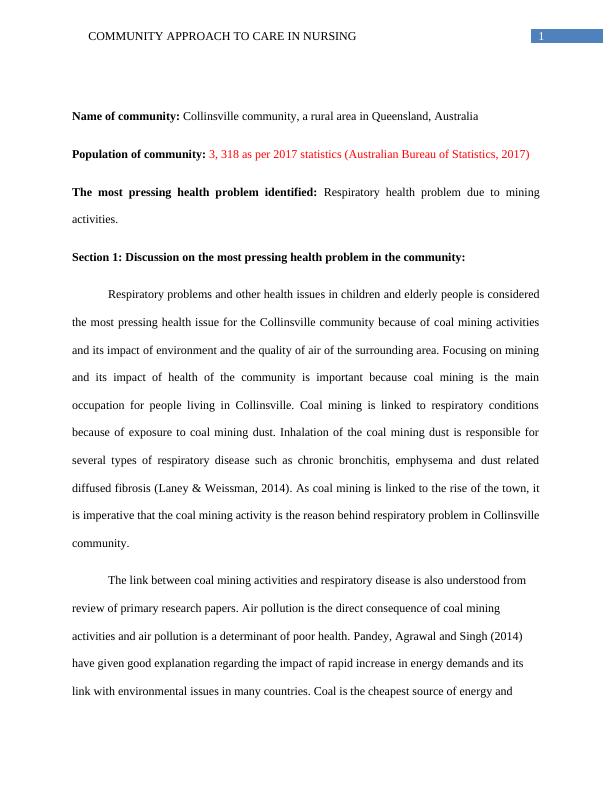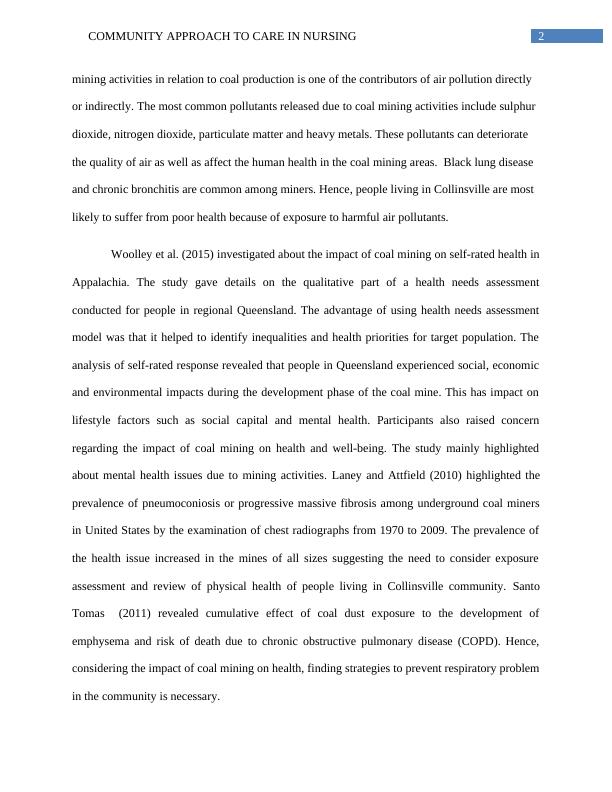Community Approach to Care in Nursing
This subject outline provides information about the subject Community Approaches to Care offered at James Cook University in Study Period 2 of 2018. It includes details about the subject code, study mode, subject coordinator, pre-requisites, and the acknowledgement of Traditional Owners.
7 Pages1659 Words74 Views
Added on 2023-06-04
About This Document
This article discusses the most pressing health problem in Collinsville community, a rural area in Queensland, Australia, which is respiratory health problem due to mining activities. It also suggests a solution to alleviate the identified health problem through a community approach to care in nursing.
Community Approach to Care in Nursing
This subject outline provides information about the subject Community Approaches to Care offered at James Cook University in Study Period 2 of 2018. It includes details about the subject code, study mode, subject coordinator, pre-requisites, and the acknowledgement of Traditional Owners.
Added on 2023-06-04
ShareRelated Documents
End of preview
Want to access all the pages? Upload your documents or become a member.
Health Impacts of Air Pollution
|6
|1881
|321
Impact of Air Pollution on Health in Sydney
|12
|2211
|103
Air Pollution in Cambodia
|9
|2118
|1
Introduction toEnvironmental Public Health Tracking
|10
|2593
|101
Environmental Impact of Resource Usage in Commercial Cookery
|27
|7784
|301
Chronic Obstructive Pulmonary Disease Essay
|12
|2476
|154



